A bit later than usual and perhaps a little shorter than for previous years, the 2010/11 Slotovino awards are nonetheless as eclectic and fascinating as before thanks to the ever-changing face of wine as they say and our luck in finding wonderful new experiences every year.
As ever, we exclude previous winners, so our choices may not always represent net improvements.
Best Red Wine discovery
Casetta, Trentino
A grape totally new to us - as delicious as it is obscure.
Best White Wine discovery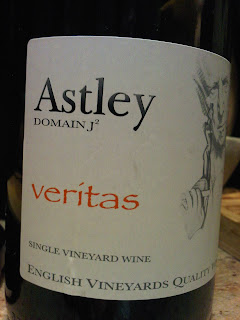
Astley Vineyard 'Veritas' Kerner.
An English white which doesn't taste like an English white - high praise indeed but not only that. This example of the usually uninspiring variety, Kerner is as good if not better than any we have tasted from Central Europe or Italy. Could this be the signature grape for English white one day? Probably not if only because according to Astley Vineyards who inherited the planting from the original owners in the days when it was England's most northerly vineyard, Kerner is very difficult to grow. All praise to them and their hard work.
Best Rose discovery
Strohmeier Schilcher Lestoa (Blaue Wildbacher) (Austria)
This tastes like no other Schilcher we know. It has the weight of a red wine despite the pink clothing. Fascinating as well as delicious. The Blaue Wildbacher is another inexplicably neglected variety, responsible for some wonderful reds as well as this Rose. We are in good company here;
"After the weekend, Schubert and Jenger, in the company of Anselm Huettenbrenner and the Pachlers, made a three-day visit to the castle of Wildbach some twenty miles south-west of Graz, which was managed by an aunt of Dr. Pachler, Anna Massegg. Again they made music, assisted by Massegg's eldest daughter, in a beautiful 'blue room' with fine views across the garden; and they were refreshed by generous supplies of the excellent local wine, the Schilcher, a light rose which proved a particular favourite with Schubert."
Franz Schubert, A Biography, by Elizabeth Norman McKay (p.284). Oxford University Press, 1996
The date of Schubert's visit to Wildbach was September 1827.
Schubert was a great lover of wine; sometimes too much so. As with others at this period there is little information concerning what they actually drank apart from the odd mention of Riesling or Tokay, so this reference to Schubert's actual visit to Wildbach and liking for Schilcher is rare and interesting - to us as Schubert lovers at least.
Best Wine Merchant (UK)Troubadour Wines, London

 Best Wine Merchant (rest of world)
Best Wine Merchant (rest of world)
Chambers St. Wines, NYC

 Best Supermarket for wine
Best Supermarket for wineno award this year
Best Airport Duty FreeVino Volo, JFK T8
 (Worst Airport Duty Free)
(Worst Airport Duty Free)Vasteras, Sweden. NB. this concludes our competition to recognise this establishment in May 2011 which our photo showed the entire selection.
 Best Promotional outlet for Wine
Best Promotional outlet for WineVini nuovi Tai, Venice Airport
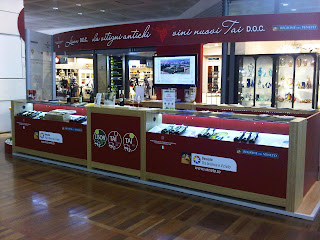 Most surprising wine discovery
Most surprising wine discovery
Biddenden Gribble Ridge Dornfelder, the first English Red Wine ofwhich we would not mind having a case (and how many English reds can one say that of?).
Slotovino Prediction for 2011/12The wine investment bubble will burst.
Best Sommelier
Laure Patry, the 'Bordelaise' at the Pollen St. Social Club, London. We went to this restaurant months before 'Decanter' sang its praises (August 2011) and had already chosen Laure Patry potentially as our Sommelier of the year. Not even realising the magnificent and fascinating winelist was all her own work, we ordered a bottle of Wild Fermant Assyritiko from Gaia, Greece. When Laure showed us the bottle we were disappointed to see the wine was more alcoholic than we would have liked. At those moments with a 500 bottle winelist from which to choose a lower alcohol substitute, we put ourselves in Laure's hands and she suggested without missing a beat a Verdejo by Calamar of Rueda which was ideal. The point about calling Laure 'la Bordelaise' is that we learned she comes from near Bordeaux and we admit prejudice in being surprised she recommended a Spanish wine rather than a French one. She is wonderfully businesslike with a quiet charm. This is what Decanter subsequently said about her;
Sommelier savvy: Head sommelier Laure Patry has
assembled a brilliant list: nearly 500 wines from
all over the world, about half of them natural
(organic, biodynamic, etc) and all good value. We
had an eclectic selection of small plates, and she
recommended María Gomes (the Portuguese
grape) from Luís Pato, and Gaia’s Assyrtiko from
Greece – both among the three dozen offered by
the glass, and both perfect.
Best Restaurant winelist
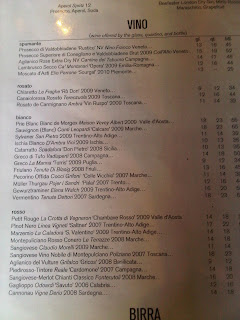
Caffe Muzio, NYC.
We likes the fact there was maximum diversity and interest in a comparatively minuscule list.
 Most promising grape
Most promising grapeOrtrugo, Emilia Romagna
 Vigneron of the year
Vigneron of the year
Domenici Pedrini (oenologist), Azienda Agricola Pravis, Lasino, Trento who is an owner together with his two partners Mario Zambarda (Vineyard) and Gianni Chiste (sales).
 Pravis are a superlative outfit dedicated to reviving, maintaining and restoring 'heritage' grape varieties including Negrara, Rebo, Gropello, Franconia (Blaufrankisch/Lemberger), Nosiola, Schiava Gentile etc.
Pravis are a superlative outfit dedicated to reviving, maintaining and restoring 'heritage' grape varieties including Negrara, Rebo, Gropello, Franconia (Blaufrankisch/Lemberger), Nosiola, Schiava Gentile etc.
Most depressing marketing campaign'Turkey produces 3 times as much grapes as South Africa' but how many of these are for wine production?
 Best kept wine secret
Best kept wine secretThe wines of Trentino
Most pleasant surprise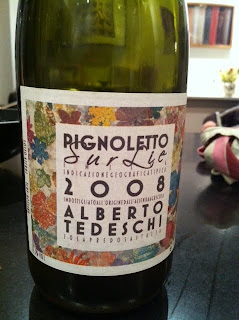
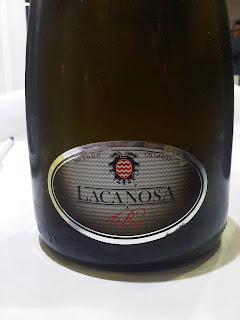

Italian alternatives to Prosecco: Passarina, Pignoletto, Spergola











